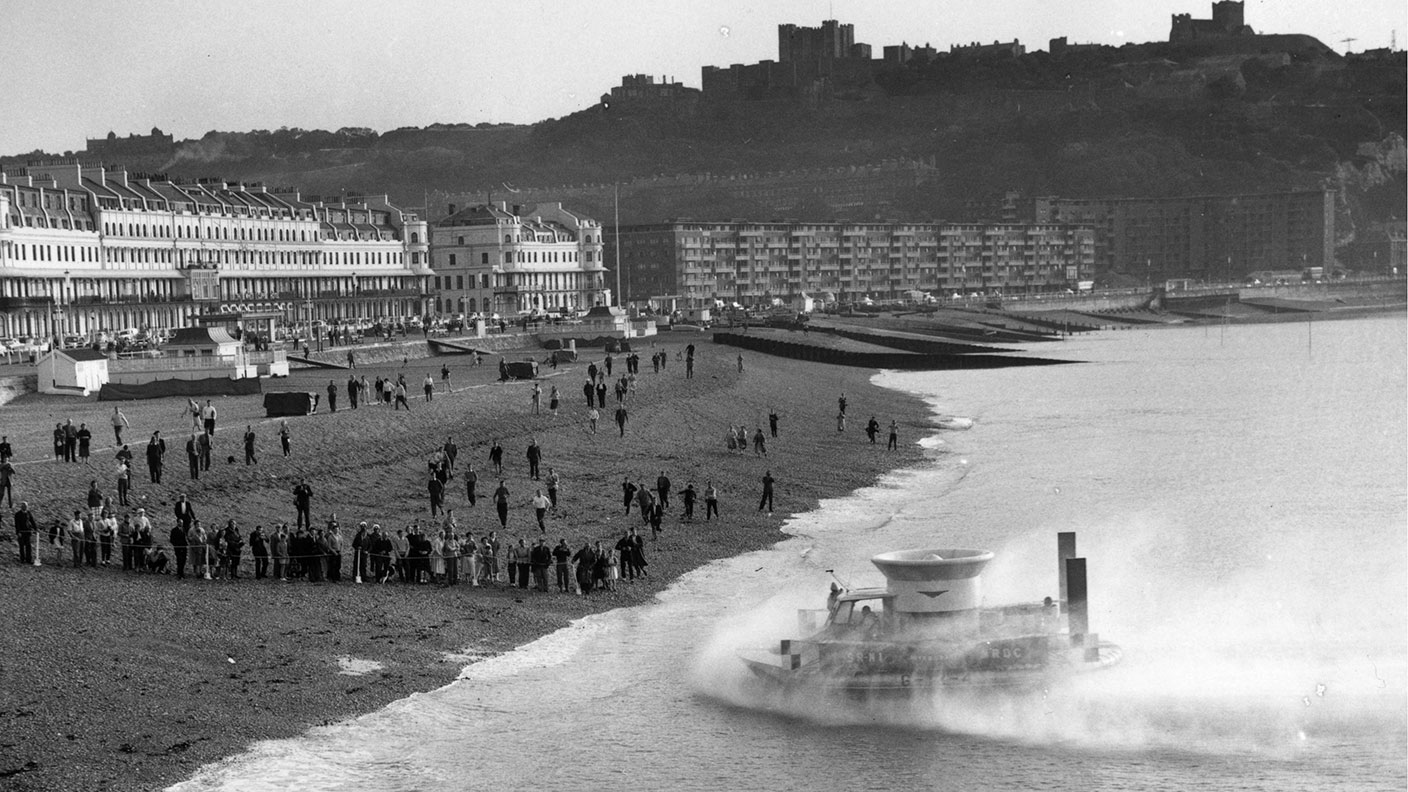25 July 1959: First hovercraft crosses the English Channel
This day in 1959 saw the first hovercraft cross the English Channel. By 1968, regular services were taking passengers and cars across in 35 minutes.


In the 1920s and 1930s, engineers in the US, Finland and the Soviet Union were looking for ways to build faster boats. Much of the energy needed to move a boat is consumed by the friction created in dragging a hull through water, so one idea was to create a design that would allow the vessel to travel inches above the surface on a layer of air, thus reducing the friction.
But while a few prototypes were built, no one could crack the problem of generating a consistent supply of air in a practical way. World War II then ended the research. It wasn't until the 1950s that Sir Christopher Cockerell, an inventor who owned a boat firm, came up with a solution: a ring of high-pressure air trapped within a cushion.
This reduced the power needed to stay above the water, and allowed the craft to deal with waves and to travel on land. After first approaching the armed forces, Cockerell got government funding to develop a civilian version, the SR-N1.
MoneyWeek
Subscribe to MoneyWeek today and get your first six magazine issues absolutely FREE

Sign up to Money Morning
Don't miss the latest investment and personal finances news, market analysis, plus money-saving tips with our free twice-daily newsletter
Don't miss the latest investment and personal finances news, market analysis, plus money-saving tips with our free twice-daily newsletter
On 11 June 1959, the first successful tests took place. A few weeks later, the SR-N1 crossed the Channel. There was an explosion of interest and several firms developed improved versions. By 1968 regular services were taking passengers and cars from England to France in 35 minutes.
But rising fuel costs in the 1970s meant conventional ferries remained dominant. The opening of the Channel Tunnel in 1994 replaced the hovercraft as the quickest cross-Channel route. In 2000, services on the Channel were wound up.
However, the hovercraft's manoeuvrability and speed mean that it is still used by coastguards in Britain and Europe, as well as by armed forces around the world.
Get the latest financial news, insights and expert analysis from our award-winning MoneyWeek team, to help you understand what really matters when it comes to your finances.

-
 Why Trustpilot is a stock to watch for e-commerce exposure
Why Trustpilot is a stock to watch for e-commerce exposureTrustpilot has built a defensible position in one of the most critical areas of the internet: the infrastructure of trust, says Jamie Ward
-
 Tetragon Financial: An investment trust with stellar returns
Tetragon Financial: An investment trust with stellar returnsTetragon Financial has performed very well, but it won't appeal to most investors – there are clear reasons for the huge discount, says Rupert Hargreaves
-
 31 August 1957: the Federation of Malaya declares independence from the UK
31 August 1957: the Federation of Malaya declares independence from the UKFeatures On this day in 1957, after ten years of preparation, the Federation of Malaya became an independent nation.
-
 13 April 1960: the first satellite navigation system is launched
13 April 1960: the first satellite navigation system is launchedFeatures On this day in 1960, Nasa sent the Transit 1B satellite into orbit to provide positioning for the US Navy’s fleet of Polaris ballistic missile submarines.
-
 9 April 1838: National Gallery opens in Trafalgar Square
9 April 1838: National Gallery opens in Trafalgar SquareFeatures On this day in 1838, William Wilkins’ new National Gallery building in Trafalgar Square opened to the public.
-
3 March 1962: British Antarctic Territory is created
Features On this day in 1962, Britain formed the British Antarctic Territory administered from the Falkland Islands.
-
10 March 2000: the dotcom bubble peaks
Features Tech mania fanned by the dawning of the internet age inflated the dotcom bubble to maximum extent, on this day in 2000.
-
9 March 1776: Adam Smith publishes 'The Wealth of Nations'
Features On this day in 1776, Adam Smith, the “father of modern economics”, published his hugely influential book The Wealth of Nations.
-
 8 March 1817: the New York Stock Exchange is formed
8 March 1817: the New York Stock Exchange is formedFeatures On this day in 1817, a group of brokers moved out of a New York coffee house to form what would become the biggest stock exchange in the world.
-
7 March 1969: Queen Elizabeth II officially opens the Victoria Line
Features On this day in 1969, Queen Elizabeth II took only her second trip on the tube to officially open the underground’s newest line – the Victoria Line.